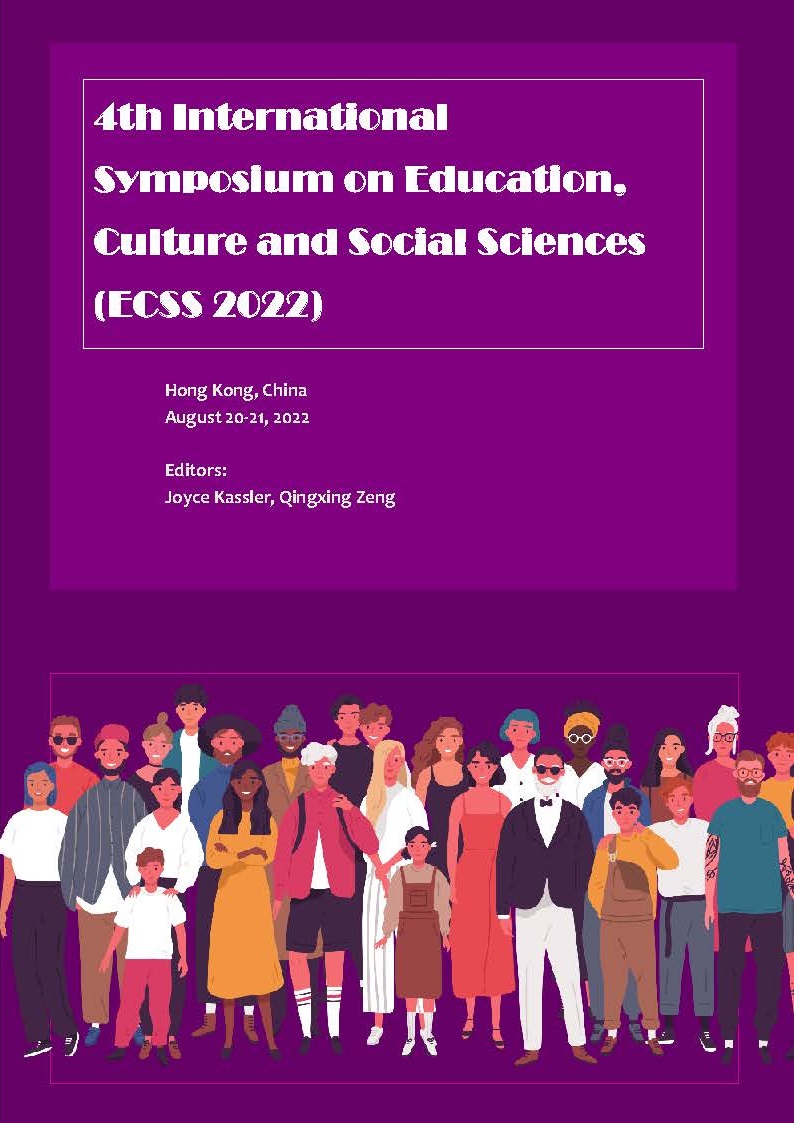The impact of different family socio-economic classes on the use of Internet learning by adolescence in two regions, Europe and China
DOI:
https://doi.org/10.54691/bcpssh.v19i.1631Keywords:
Academic performance, socio-economic status, Internet, COVID-19Abstract
Society is evolving rapidly, families from different socio-economic backgrounds also influence the learning of adolescence, to the extent that access to a proper education as well as access to better learning opportunities is another way of proving the socio-economic status (SES) of the family. Similarly, the spread of electronic information technology is something that every adolescence is exposed to, and the role that electronic technology plays in family learning has received more attention from society, with different family socio-economic status having a clear impact on the networks that adolescence use for learning. Another manifestation of the family life environment is the socio-economic situation of the family. It will depend on the material conditions of the family can reach a different manifestation and family-led activities available to parents to help support their adolescence. In other words, the socio-economic status of the family will affect the learning and academic performance of adolescents in different families. How families from diverse socio-economic status influence the internet used by adolescence for learning will be the topic of this study. The Internet does not necessarily reflect effective in helping adolescence to learn, but it can also distract them from their studies. Parents from different socioeconomic backgrounds, each with different levels of education, different educational habits, and different experience with emerging technologies, influence the impact of adolescents' use of the Internet for help. During the COVID-19 pandemic, the impact of families across all classes on young people's learning was, and still is in some regions, also critical to their academic success.
Downloads
References
Andrew, A., Cattan, S., Costa Dias, M., Farquharson, C., Kraftman, L., Krutikova, S., Phimister, A., & Sevilla, A. (2020). Inequalities in children's experiences of home learning during the COVID‐19 lockdown in england. Fiscal Studies, 41(3), 653-683. https://doi.org/10.1111/1475-5890.12240.
Barg, K. (2019). An analysis of social class differentials in parent-initiated contact with teachers. British Journal of Sociology of Education, 40(3), 289-308. https://doi.org/10.1080/01425692.2018.1540294.
Barry, C. T., Sidoti, C. L., Briggs, S. M., Reiter, S. R., & Lindsey, R. A. (2017). Adolescent social media use and mental health from adolescent and parent perspectives. Journal of Adolescence (London, England.), 61(1), 1-11. https://doi.org/10.1016/j.adolescence.2017.08.005.
Bai, Y., Mo, D., Zhang, L., Boswell, M., & Rozelle, S. (2016). The impact of integrating ICT with teaching: Evidence from a randomized controlled trial in rural schools in china. Computers and Education, 96, 1-14. https://doi.org/10.1016/j.compedu.2016.02.005.
Camerini, A., Schulz, P. J., & Jeannet, A. (2018). The social inequalities of internet access, its use, and the impact on children’s academic performance: Evidence from a longitudinal study in switzerland. New Media & Society, 20(7), 2489-2508. https://doi.org/10.1177/1461444817725918.
Carrier, L. M., Rosen, L. D., Cheever, N. A., & Lim, A. F. (2015). Causes, effects, and practicalities of everyday multitasking. Developmental Review, 35, 64-78. https://doi.org/10.1016/j.dr.2014.12.005.
Chen, J., & Liu, M. F. (2021). Does the internet expand the educational gap among different social classes? the protective role of future orientation. Frontiers in Psychology, 12, 647351-647351. https://doi.org/10.3389/fpsyg.2021.647351.
Clark, L. S., & Oxford University Press. (2013). The parent app: Understanding families in the digital age. Oxford University Press.
Chen, Q., Kong, Y., Gao, W., & Mo, L. (2018). Effects of socioeconomic status, parent–child relationship, and learning motivation on reading ability. Frontiers in psychology, 9, 1297.
Chen, Q., & Yan, Z. (2016). Does multitasking with mobile phones affect learning? A review. Computers in Human Behavior, 54, 34-42. https://doi.org/10.1016/j.chb.2015.07.047.
Drane, C. F., Vernon, L., & O’Shea, S. (2020;2021;). Vulnerable learners in the age of COVID-19: A scoping review. Australian Educational Researcher, 48(4), 585-604. https://doi.org/10.1007/s13384-020-00409-5.
Du, H., Zhou, N., Cao, H., Zhang, J., Chen, A., & King, R. B. (2021). Economic inequality is associated with lower internet use: A nationally representative study. Social Indicators Research, 155(3), 789-803. https://doi.org/10.1007/s11205-021-02632-8.
Gazeley, L. (2012). The impact of social class on parent-professional interaction in school exclusion processes: Deficit or disadvantage? International Journal of Inclusive Education, 16(3), 297-311. https://doi.org/10.1080/13603116.2010.489121.
González, S., & Bonal, X. (2021). COVID‐19 school closures and cumulative disadvantage: Assessing the learning gap in formal, informal and non‐formal education. European Journal of Education, 56(4), 607-622. https://doi.org/10.1111/ejed.12476.
Goudeau, S., Sanrey, C., Stanczak, A., Manstead, A., & Darnon, C. (2021). Why lockdown and distance learning during the COVID-19 pandemic are likely to increase the social class achievement gap. Nature Human Behaviour, 5(10), 1273-1281. https://doi.org/10.1038/s41562-021-01212-7.
Hope, A. (2006). School internet use, youth and risk: A social-cultural study of the relation between staff views of online dangers and students' ages in UK schools. British Educational Research Journal, 32(2), 307-329. https://doi.org/10.1080/01411920600569305.
Hunt, C. S., & Seiver, M. (2018). Social class matters: Class identities and discourses in educational contexts. Educational Review (Birmingham), 70(3), 342-357. https://doi.org/10.1080/00131911.2017. 1316240.
Hollingworth, S., Mansaray, A., Allen, K., & Rose, A. (2011). Parents' perspectives on technology and children's learning in the home: Social class and the role of the habitus. Journal of Computer Assisted Learning, 27(4), 347-360. https://doi.org/10.1111/j.1365-2729.2011.00431.x.
Kietzmann, J. H., Hermkens, K., McCarthy, I. P., & Silvestre, B. S. (2011). Social media? get serious! understanding the functional building blocks of social media. Business Horizons, 54(3), 241-251. https://doi.org/10.1016/j.bushor.2011.01.005.
Kirkorian, HL, Wartella, EA, Anderson, DR (2008) Media and young children’s learning. Future of Children 18(1): 39–61.
Knopik, T., Błaszczak, A., Maksymiuk, R., & Oszwa, U. (2021). Parental involvement in remote learning during the COVID‐19 pandemic—Dominant approaches and their diverse implications. European Journal of Education, 56(4), 623-640. https://doi.org/10.1111/ejed.12474.
Kofoed, J., & Staksrud, E. (2019). ‘We always torment different people, so by definition, we are no bullies’: The problem of definitions in cyberbullying research. New Media & Society, 21(4), 1006-1020. https://doi.org/10.1177/1461444818810026.
Li, S., Xu, Q., & Xia, R. (2019;2020;). Relationship between SES and academic achievement of junior high school students in china: The mediating effect of self-concept. Frontiers in Psychology, 10, 2513-2513. https://doi.org/10.3389/fpsyg.2019.02513.
Ivarsson, M., Anderson, M., Åkerstedt, T., & Lindblad, F. (2013). The effect of violent and nonviolent video games on heart rate variability, sleep, and emotions in adolescents with different violent gaming habits. Psychosomatic medicine, 75(4), 390-396.
Perry, L. (2018). Educational inequality in Australia, How unequal? Insights into inequality (pp. 56–67). Melbourne: Committee for Economic Development of Australia (CEDA).
Perry, L., & McConney, A. (2013). School socioeconomic status and student outcomes in reading and mathematics: A comparison of Australia and Canada. Australian Journal of Education, 57(2), 124–140. https://doi-org.ezproxy.lib.gla.ac.uk/10.1177/0004944113485836.
Pinoncely, V. (2016). Poverty, place and inequality: Why place-based approaches are key to tackling poverty and inequality. London: Royal Town Planning Institute.
Reay, D. (2016). Social class in higher education: Still an elephant in the room. In J. Cote & J. Furlong (Eds.), Routledge Handbook of the Sociology of Higher Education. London: Routledge.
Reay, D. (2017). Miseducation: Inequality, education and the working class. Bristol: Policy Press.
Rouchun, D., Zongkui, Z., Shuailei, L., Qingqi, L., & Chen, G. (2019;2021;). Family socioeconomic status and the parent-child relationship: Children’s internet use as a moderated mediator. Current Psychology (New Brunswick, N.J.), 40(9), 4384-4393. https://doi.org/10.1007/s12144-019-00356-0.
Rubin, M., D. Denson, S. Kilpatrick, K. Matthews, T. Stehlik, and D. Zyngier. 2014. “‘I Am Working-Class’ Subjective Self-Definition as a Missing Measure of Social Class and Socioeconomic Status in Higher Education Research.” Educational Researcher 43 (4): 196–200.
Madden, M., Lenhart, A., Cortesi, S., Gasser, U., Duggan, M., Smith, A., & Beaton, M. (2013). Teens, social media, and privacy. Pew Research Center, 21(1055), 2-86.
Mascheroni, G., & Ólafsson, K. (2016). The mobile internet: Access, use, opportunities and divides among european children. New Media & Society, 18(8), 1657-1679. https://doi.org/10.1177/ 1461444814567986.
Moreno, M. A., & Whitehill, J. M. (2014). Influence of social media on alcohol use in adolescents and young adults. Alcohol Research, 36(1), 91-100.
Rouchun, D., Zongkui, Z., Shuailei, L., Qingqi, L., & Chen, G. (2019;2021;). Family socioeconomic status and the parent-child relationship: Children’s internet use as a moderated mediator. Current Psychology (New Brunswick, N.J.), 40(9), 4384-4393. https://doi.org/10.1007/s12144-019-00356-0.
Turel, O., Romashkin, A., & Morrison, K. M. (2016). Health outcomes of information system use lifestyles among adolescents: Videogame addiction, sleep curtailment and cardio-metabolic deficiencies. PloS One, 11(5), e0154764-e0154764. https://doi.org/10.1371/journal.pone.0154764.
Ur Rahman, I., Jian, D., Junrong, L., & Shafi, M. (2021). Socio-economic status, resilience, and vulnerability of households under COVID-19: Case of village-level data in sichuan province. PloS One, 16(4), e0249270-e0249270. https://doi.org/10.1371/journal.pone.0249270.
Wallace, L. N. (2021). Differences in social media monitoring practices based on child and parent gender. Family Relations, 70(5), 1412-1426. https://doi.org/10.1111/fare.12568.
Waller, G, Willemse, I, Genner, S. (2016) JAMES: Jugend, Aktivitäten, Medien—Erhebung Schweiz. Available at: https://www.zhaw.ch/storage/psychologie/upload/forschung/medienpsychologie/james/2016/Ergebnisbericht_JAMES_2016.pdf (accessed 5 December 2016).
Van Dijk, J. A. (2012). The evolution of the digital divide-the digital divide turns to inequality of skills and usage. In Digital enlightenment yearbook 2012 (pp. 57-75). IOS Press.
Vernon, L., Watson, S. J., Moore, W., & Seddon, S. (2019). University enabling programs while still at school: Supporting the transition of low-SES students from high-school to university. The Australian Educational Researcher, 46(3), 489–509. https://doi-org.ezproxy.lib.gla.ac.uk/10.1007/s13384-018-0288-5.
Ye, W. (2018). Socioeconomic status and out-of-school citizenship education in China’s shanghai. Education and Urban Society, 50(7), 641-669. https://doi.org/10.1177/0013124517713609.
Zhang, J. Z., and Huang, S. G. (2018). Hidden reproduction: The influence mechanism of educational equity: an empirical study based on Internet preference of students from different social class of urban and rural areas. Chin. Educ. Technol. 382, 18–23.
Zhang, X. Y., Leng, L., Chen, H. J., Fang, X. Y., Shu, Z., & Lin, X. Y. (2017). Parental rearing pattern mediates the association between social economic status and cognitive ability of migrant children. Psychological Development and Education, 33(2), 153-162.
















